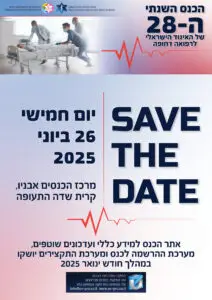פוסט זה זמין גם ב:
![]() עברית
עברית
Oct 4, 2022
Contributor: Don Stader, MD
Educational Pearls:
- There are two major groups of local anesthetics: Amide and Esther
-
- To recall what group an anesthetic belongs to, use this memory trick:
Amide has an ‘i’ in the name and Amide anesthetics have 2 ‘i’s e.g., Lidocaine.
Ester has no ‘i’ and most common Ester anesthetics have only one ‘i’ e.g., Tetracaine.
- In a true allergy and/or contraindication to both local anesthetic groups, diphenhydramine is an acceptable alternative.
- Epinephrine is administered with local anesthetics to decrease bleeding, increase duration of action, and minimize systemic spread of the anesthetic, thus reducing toxicity.
- Symptoms of Local Anesthetic Systemic Toxicity (LAST) may begin with dizziness, confusion and/or slurred speech, and can progress to cardiovascular collapse and death.
- Treat LAST with lipid emulsion therapy i.e. ‘Intralipids’ to create a lipid sink that absorbs anesthetic agent
-
- Administer initial 1.5 ml/kg bolus (approximately 100 ml in 70 mg adult) followed by infusion rate of 0.25 mg/kg/hour. Do not surpass 10 mg/kg total.
References
Dickerson DM, Apfelbaum JL. Local anesthetic systemic toxicity. Aesthet Surg J. 2014;34(7):1111-1119. doi:10.1177/1090820X14543102
Bina B, Hersh EV, Hilario M, Alvarez K, McLaughlin B. True Allergy to Amide Local Anesthetics: A Review and Case Presentation. Anesth Prog. 2018;65(2):119-123. doi:10.2344/anpr-65-03-06
Macfarlane AJR, Gitman M, Bornstein KJ, El-Boghdadly K, Weinberg G. Updates in our understanding of local anaesthetic systemic toxicity: a narrative review. Anaesthesia. 2021;76 Suppl 1:27-39. doi:10.1111/anae.15282








